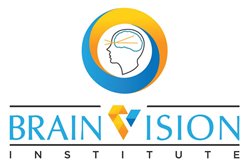
Post-concussion vision problems are surprisingly common. They can impact everything from reading and memory to balance and depth perception. While many people expect headaches or memory lapses after a concussion, they’re caught off guard when they—or their child—begin having trouble with reading comprehension, hand-eye coordination, or even walking downstairs. These are not behavioral issues or developmental delays; they’re neurological effects, and they’re treatable.
At Brain Vision Institute in South Barrington, we work with children and adults who experience visual dysfunction after a concussion or other acquired brain injury. In this article, we’ll walk through the signs and symptoms of post-concussion vision problems, explain how these issues affect daily life, and outline the therapeutic steps that can support post-concussion recovery.
How Concussions Affect Vision
The brain and eyes work as a team. Visual information is processed by over half of the brain’s neural network, which means any disruption caused by injury—especially trauma to the head—can trigger a cascade of visual issues.
These issues are not always apparent during a standard eye exam, which typically checks for sharpness and general eye health. Someone might have perfect “20/20” sight and still struggle with severe visual disruptions after a concussion. Common post-concussion symptoms include:
- Eye strain
- Difficulty tracking moving objects
- Light sensitivity
- Poor reading comprehension
- Blurred vision or double vision
- Headaches after visual tasks
- Motion sickness
- Trouble focusing from one object to another
- Problems with depth perception or balance
Some visual symptoms show up immediately. Others may not appear until days—or even weeks—after the injury. That’s why understanding the link between traumatic brain injuries and visual function is so important.
Why Concussion Symptoms Disrupt Daily Life
Vision issues after a concussion don’t just affect what a person sees—they interfere with how they learn, move, and engage with the world. Here’s how these challenges can show up:
In Children: Misdiagnosis and Frustration
Children may suddenly seem less engaged in school or complain of headaches and fatigue. Parents and teachers might misinterpret these behaviors as inattention or learning delays, especially if academic performance drops. Without the proper diagnosis, children are left frustrated and misunderstood, when in fact, they may be working twice as hard to see and process visual information.
In Adults: Cognitive Overload and Workplace Difficulty
Adults may notice a reduced ability to concentrate, particularly in visually demanding environments such as computer work or driving. Tasks that once felt simple—such as reading a document, navigating a grocery store, or tracking fast-moving objects—become tiring and overwhelming. These changes can lead to social withdrawal, job-related challenges, or even safety concerns if left untreated.
In Both: Emotional and Physical Fatigue
Vision dysfunction can create a chronic sense of fatigue. The brain is overworking to compensate for poor visual processing, which can lead to irritability, mood swings, or emotional exhaustion. People may not realize that these symptoms are vision-related, which can further delay diagnosis and proper care.
How Neuro-Optometric Rehabilitation at Brain Vision Institute Helps
Neuro-optometric vision rehabilitation is a specialized form of vision therapy designed to retrain the brain and visual system to work together. It’s not just about eye strength or visual clarity—it’s about restoring the brain’s ability to interpret and respond to visual input correctly.
At Brain Vision Institute, we tailor therapy plans for each patient. Our therapy might include:
- Exercises to improve eye teaming and eye tracking
- Tools to reduce visual stress and light sensitivity
- Balance and coordination activities to re-establish visual-spatial awareness
- Interactive technology that strengthens brain-eye communication
This therapy can have a profound impact, especially when started early. Children return to their studies more confident and capable. Adults regain clarity, both in their vision and their daily lives.
Concussion Vision Therapy in South Barrington, IL
If you or your child is experiencing visual problems after a concussion, don’t assume it’s something they’ll “grow out of” or “just have to live with.” There are real and effective treatment options available—and they begin with the proper evaluation.
At Brain Vision Institute, we specialize in post-concussion vision care in in South Barrington. Our eye doctors work closely with families and referring professionals to ensure each patient gets the care they need. Book your appointment to find out how we can help you.


*Open Saturday by appointment only.